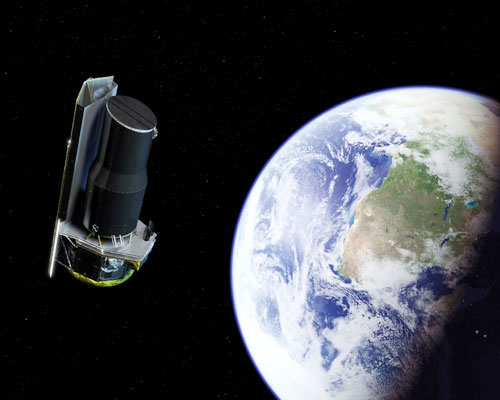Spitzer Space Telescope

Artist's conception of the Spitzer Space Telescope shortly after launch.
The Spitzer Space Telescope, previously known as the Space Infrared Telescope Facility (SIRTF), is a large, space-borne, cryogenically-cooled infrared observatory. Launched on 25 August 2003, the Spitzer Space Telescope is the final element in NASA's Great Observatories Program and an important scientific and technical cornerstone of the Origins Program. It was renamed the Spitzer Space Telescope on 18 December 2003, in honor of the American astrophysicist Lyman Spitzer Jr.
The Spitzer Telescope carries three instruments in an Earth-trailing, heliocentric orbit on a mission that is estimated to last 2.5 to 5+ years, depending on how long the spacecraft's supply of liquid helium, used to keep the imaging systems close to absolute zero, lasts. These instruments include: a far-infrared camera (known as the Multiband Imaging Photometer, or MIPS) from the University of Arizona that will be able to detect planetary debris systems around sun-like stars, the Infrared Array Camera from the Harvard-Smithsonian Center for Astrophysics, and the Infrared Spectrograph from Cornell University.


